Calke - Dimminsdale
Nature Reserve
w/e 11 February 2007
All
this week's pictures were taken with a Kodak DX6490

We ventured a little further away than usual for this set of
images but it was still less than 20 miles from Ilkeston to the
southern end of the Staunton Harold Reservoir in South Derbyshire,
near Melbourne. We parked on the Springwood Car Park and followed
the road round the bend and over the small bridge that can be
seen on the left of the image above. The entrance to Dimminsdale
Nature Reserve is about 50 metres beyond the bridge.
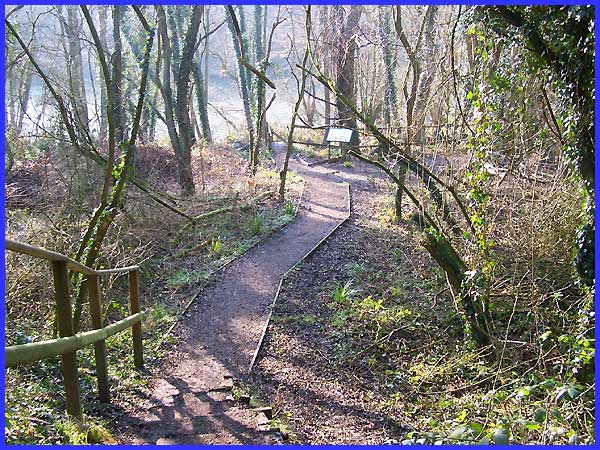
The path from the entrance leads via a small footbridge and a
number of steps to an information board to a point where it splits
to follow a circular route around the site. We opted to go right
in an anti-clockwise direction but we saw marker posts as we
walked and it soon became apparent the they were numbered in
descending order so perhaps the normal way to go is the clockwise
direction.
|

We maybe should have spent more time studying the information
boards of which there are several instead of photographing them
for later perusal.
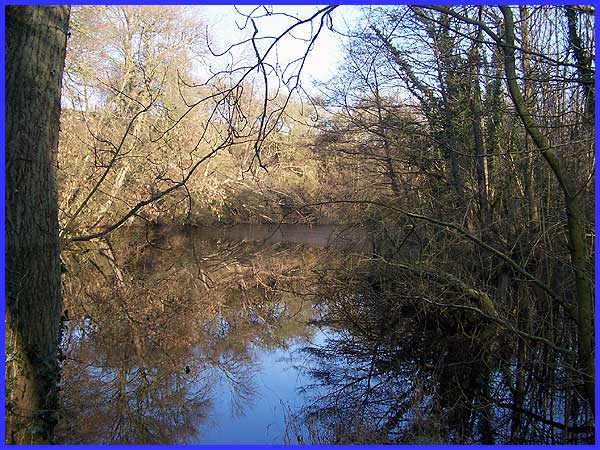
The whole reserve is on a site that has been the subject of mineral
extraction as in the eighteenth and nineteenth centuries both
limestone and lead mining took place here. After the cessation
of the mining activity, the quarries flooded and created a number
of pools and brooks. This one was in a fairly sheltered place
and was only partly covered by a thin layer of ice.
|
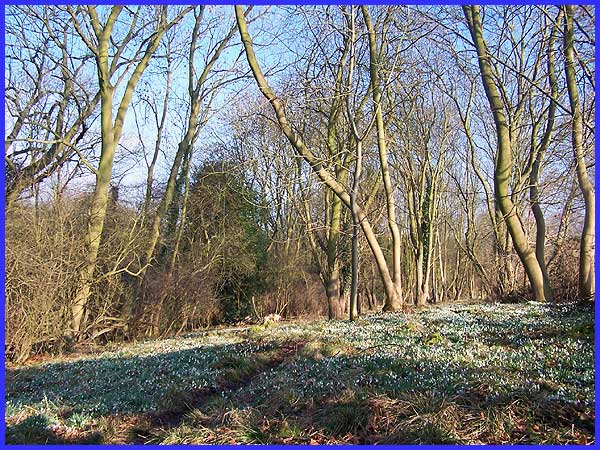
The south-western corner of the site is renowned in February
for displays of snowdrops and this was one of the things that
had instigated our visit.
|
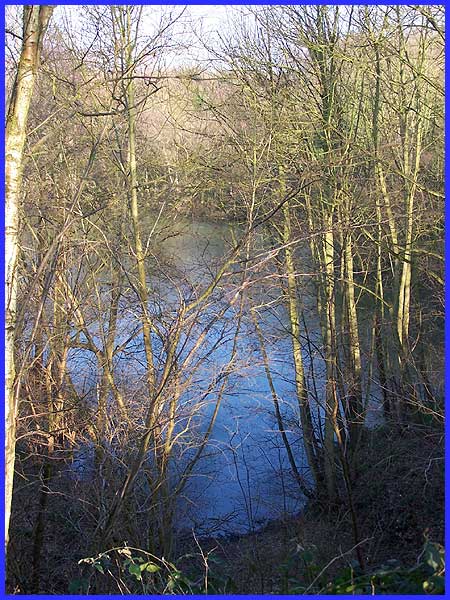
The path around the site is about a mile long and visitors are
advised not to stray from it as it could well be dangerous to
do so. There are several mine shafts on the site as well as the
water filled quarries. The path from the snowdrop area passes
above a quarry and quite close to edge as can be seen above.
|
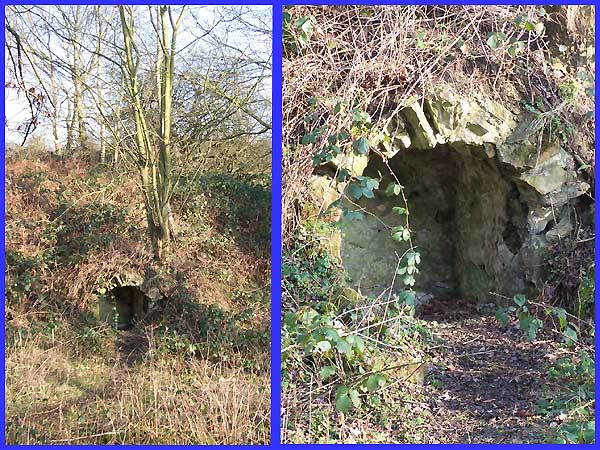
Further evidence of the earlier industrial activity can be seen
in the remains of kilns that were built to burn limestone for
the production of lime but most of the other buildings that stood
on the site have now disappeared. The snowdrops originated in
the gardens of cottages used by workers for the Staunton Estate.
|
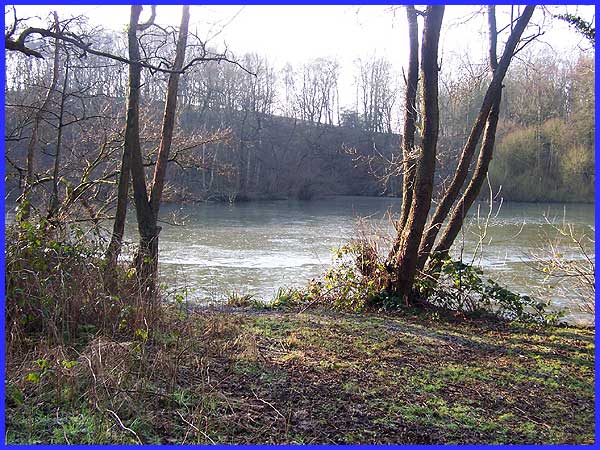
The main quarry on the site was owned by the Harpur-Crewe family
and was at one time overlooked by a cottage which served as a
laundry for Staunton Harold Hall half a mile further up the valley.
This gave rise to this expanse of water being called the Laundry
Pool. The reserve is now owned by Severn Trent Water and managed
by the Leicestershire and Rutland Wildlife Trust.
|

